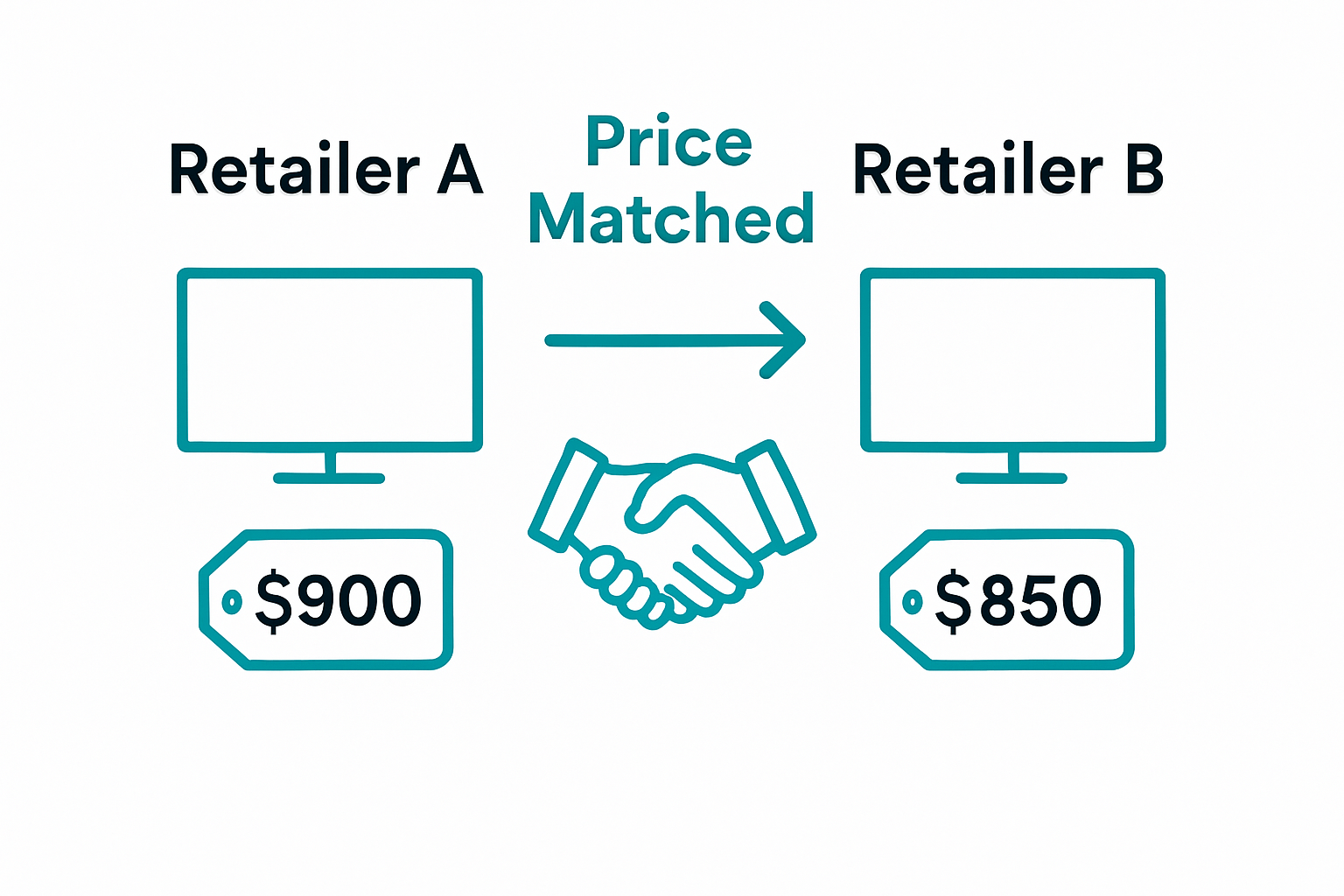-
Shop
- Advanced Technologies
- Arts, Crafts & Hobbies
- Back to School
- Bathroom
- Best-Sellers
- Car Accessories
- Clothing
- Dating & Social Skills
- Digital Resources
- Budgeting & Saving
- Emotional Intelligence
- Entrepreneurship & Business Growth
- Financial Independence
- Financial Mindset & Psychology
- Goal Setting
- Leadership
- Mindfulness
- Motivation
- Nutrition & Healthy Eating
- Positive Thinking
- Productivity
- Self Confidence
- Sleep Improvement
- Stress Management & Relaxation
- Yoga & Mind-Body Practices
- Education & Learning
- Family & Parenting
- Fashion
- Alexander McQueen
- Bags
- Bags & Wallets
- Balenciaga
- Belts
- Blazers
- Bottega Veneta
- Brunello Cucinelli
- Burberry
- Chanel
- Chloé
- Dior
- Dolce & Gabbana
- Dresses
- Etro
- Fendi
- Gucci
- Hats & Hair Accessories
- Hoodies & Sweatshirts
- Jacquemus
- Jewelry
- Jil Sander
- Jimmy Choo
- Keychains
- Kiton
- Luggage
- Men's Fashion
- Miu Miu
- Off-White
- Outerwear
- Prada
- Rick Owens
- Saint Laurent
- Shoes
- Skirts
- Socks & Tights
- Sunglasses
- Sweaters & Cardigans
- The Row
- Tom Ford
- Tops & Shirts
- Valentino
- Valentino Garavani
- Versace
- Vivienne Westwood
- Watches
- Fashion Accessories
- Furniture
- Gadgets
- Health & Beauty
- Health & Wellness
- Home & Garden
- Home Supplies
- Kids & Babies
- Kitchen
- Lighting
- Nike
- Patio, Lawn & Garden
- Personal Growth
- Personal Style & Fashion
- Pet Care
- Pet Supplies
- Pets
- Sport & Outdoors
- Super Deals
- TikTok Growth & Monetization Mastery
- Travel
- Wealth
- Wealth Building
- YouTube Shorts Best-Sellers
Understanding What is Price Matching for Savvy Shoppers

Price matching can make or break where people choose to shop today. Retailers know that over 70 percent of shoppers check prices at multiple stores before buying. Some see this as a headache for stores and a bonus for customers. What they miss is how price matching rewrites the rules for both sides, giving shoppers new power and changing how stores compete from the ground up.
Table of Contents
- Defining Price Matching: What It Really Means
- The Importance Of Price Matching In Retail
- How Price Matching Works: The Mechanisms Behind It
- Key Considerations: What To Know About Price Matching Policies
- Practical Examples: Real-World Applications Of Price Matching
Quick Summary
| Takeaway | Explanation |
|---|---|
| Price matching enhances consumer confidence. | Shoppers feel reassured knowing they won’t overpay, reducing purchase anxiety during transactions. |
| Documentation is crucial for successful price matching. | Consumers must provide evidence like ads or screenshots to validate the lower price for a match. |
| Policies vary by retailer and may have limitations. | Each store has unique rules that can affect eligibility for price matching, so shoppers should read the fine print. |
| Price matching aids retailers in maintaining competitiveness. | Retailers use this strategy to prevent customers from turning to competitors, reinforcing customer loyalty. |
| Price matching promotes transparency in pricing. | This strategy encourages fair pricing practices while allowing consumers to make informed purchasing decisions. |
Defining Price Matching: What it Really Means
Price matching is a consumer-friendly retail strategy that allows shoppers to secure the lowest possible price for a product by comparing prices across different sellers. When a retailer offers price matching, they commit to matching or beating a competitor’s advertised price for an identical item, giving customers a powerful tool to maximize their purchasing power.
Understanding the Core Concept
At its fundamental level, price matching represents a guarantee from a retailer that they will adjust their product’s price to match a lower price found elsewhere. This policy encourages transparency and competition in the marketplace, empowering consumers to make more informed purchasing decisions.
Retailers implement these policies to attract and retain customers, demonstrating confidence in their pricing and commitment to customer satisfaction.
The mechanics of price matching typically involve a few key requirements. Customers must provide proof of the lower price, such as a current advertisement, online listing, or printed promotional material.
 The competing price must usually meet specific criteria:
The competing price must usually meet specific criteria:
- The item must be identical in brand, model, and specifications
- The price must be currently available from a legitimate, authorized retailer
- The product must be in stock and immediately available for purchase
Strategic Benefits for Consumers
According to the Federal Trade Commission, price matching offers significant advantages for savvy shoppers. It eliminates the need to visit multiple stores or websites to find the best deal, saving time and reducing shopping complexity. Consumers can enjoy the convenience of purchasing from their preferred retailer while still obtaining the most competitive price.
Beyond convenience, price matching provides psychological reassurance. Shoppers feel more confident knowing they are not overpaying and can make purchases without the anxiety of finding a better deal immediately after buying. This strategy transforms the shopping experience from a potentially stressful transaction into a more transparent and customer-centric interaction.

The Importance of Price Matching in Retail
Price matching has emerged as a critical strategy for retailers seeking to maintain competitiveness and customer loyalty in an increasingly complex shopping landscape. This consumer-centric approach goes beyond simple pricing tactics, representing a sophisticated method of building trust and engagement with potential buyers.
Strategic Market Dynamics
In the digital age, consumers have unprecedented access to price information across multiple platforms. Retailers recognize that price transparency is no longer optional but a fundamental expectation. Price matching serves as a strategic response to this shift, allowing businesses to demonstrate confidence in their value proposition while simultaneously addressing consumer price sensitivity.
The strategic implications of price matching extend far beyond immediate transaction costs. Retailers leverage this approach to:
- Prevent customers from seeking alternatives
- Demonstrate commitment to fair pricing
- Build long-term customer relationships
- Differentiate themselves in crowded marketplaces
Consumer Psychology and Retail Adaptation
According to Purdue University research, price matching helps combat “showrooming” a phenomenon where consumers browse products in physical stores but ultimately purchase online at lower prices. By proactively offering price matching, retailers transform potential lost sales into opportunities for customer retention and brand loyalty.
Moreover, price matching serves as a powerful psychological tool. Consumers feel valued and protected, knowing they will not be penalized for choosing a particular retailer. This approach reduces purchase anxiety and creates a sense of fairness that can significantly influence shopping behaviors.
Economic and Competitive Advantages
Price matching is not merely a defensive strategy but an offensive approach to market positioning. Retailers who implement comprehensive price-matching policies signal confidence in their product quality and overall value proposition. By eliminating price as the sole differentiator, businesses can compete on service, convenience, and brand experience.
Ultimately, price matching represents a sophisticated dance between consumer expectations, market dynamics, and strategic business positioning. It transforms pricing from a transactional element into a relationship-building mechanism that can drive long-term customer engagement and brand loyalty.
How Price Matching Works: The Mechanisms Behind It
Price matching represents a sophisticated retail mechanism that transforms traditional pricing strategies into dynamic, customer-focused approaches. This consumer-friendly technique involves complex interactions between retailers, pricing systems, and consumer expectations, creating a nuanced framework for competitive pricing.
Technical Framework and Verification Process
Price matching operates through a structured verification system designed to ensure fairness and prevent potential abuse. Retailers establish specific protocols for comparing and validating competing prices, requiring customers to provide documented evidence of lower pricing from legitimate sources.
The typical verification process includes several critical components:
- Precise documentation of the competing price
- Verification of product specifications and condition
- Confirmation of the competitor’s pricing legitimacy
- Validation of current price availability
- Assessment of product eligibility for price matching
Competitive Market Dynamics
According to Virginia Tech research, price matching serves as a strategic mechanism that influences consumer search behavior and retailer pricing strategies. By offering price matching, retailers create a transparent ecosystem where pricing becomes more fluid and responsive to market conditions.
The mechanism incentivizes both consumers and retailers to engage in more sophisticated pricing interactions. Consumers are encouraged to research and compare prices, while retailers develop more adaptive pricing strategies that respond quickly to market fluctuations.
Strategic Implementation and Consumer Benefits
Price matching goes beyond simple price reduction. It represents a comprehensive strategy that involves advanced technological systems, real-time price tracking, and complex algorithmic assessments. Retailers invest in sophisticated software and dedicated teams to manage these intricate pricing negotiations.
The implementation of price matching transforms traditional transactional relationships into dynamic, trust-based interactions. Consumers gain confidence knowing they can secure competitive pricing without extensive shopping around, while retailers benefit from increased customer loyalty and reduced customer acquisition costs.
Ultimately, price matching demonstrates how modern retail has evolved from rigid pricing models to flexible, consumer-centric approaches that prioritize transparency, fairness, and mutual value creation.
Key Considerations: What to Know About Price Matching Policies
Price matching policies represent a complex landscape of consumer protection and retail strategy, requiring shoppers to navigate nuanced guidelines and specific conditions. Understanding these policies goes beyond simple price comparison, demanding careful attention to detailed terms and potential limitations.
Policy Structure and Limitations
Price matching is not a universal guarantee but a carefully constructed retail strategy. Each retailer develops unique policies with specific restrictions designed to protect their business interests while appearing consumer-friendly. These policies typically include intricate conditions that can significantly impact a shopper’s ability to secure a price match.
Key limitations often encompass:
Below is a table summarizing typical components, requirements, and limitations of price matching policies as described in the article.
| Component | Description |
|---|---|
| Timeframe for Requests | Requests usually must be made within a specified period after purchase or price advertisement. |
| Eligible Product Categories | Not all categories qualify; some retailers restrict price matching to certain products. |
| Required Documentation | Customers often need ads, screenshots, or proof of current lower price and product details. |
| Excluded Retailers or Marketplaces | Some stores do not match prices from specific competitors or online marketplaces. |
| Product Availability | The item must be in stock and identical (brand, model, specs) at both retailers. |
| Policy Flexibility | Policies may vary in strictness, impacting consumers’ ability to secure a price match. |
- Specific timeframes for price matching requests
- Restrictions on product categories eligible for matching
- Requirements for precise documentation
- Exclusions for online marketplace prices
- Limitations on matching prices from certain retailers
Verification and Documentation Requirements
According to Purdue University research, consumers must be prepared to provide comprehensive documentation when requesting a price match. Retailers demand concrete evidence of lower pricing, which means shoppers need to maintain meticulous records and understand the specific proof requirements.
Successful price matching often requires:
- Current, printed advertisements
- Online pricing screenshots
- Proof of item availability
- Precise product specification details
Strategic Consumer Approach
Navigating price matching policies demands a strategic approach. Consumers must read the fine print, understand the specific terms, and recognize that not all price matching opportunities are equal. Some retailers may offer more flexible policies, while others maintain strict, narrow guidelines.
The most effective strategy involves proactive research, clear communication with retailers, and a thorough understanding of the specific policy details. Shoppers should not assume price matching is automatic but instead view it as a potential negotiation process that requires preparation and patience.
Ultimately, price matching policies represent a delicate balance between consumer expectations and retailer protection, requiring informed and strategic engagement from savvy shoppers.
Practical Examples: Real-World Applications of Price Matching
Price matching transcends theoretical concepts, manifesting in diverse practical scenarios across multiple retail sectors. These real-world applications demonstrate how businesses strategically implement price-matching policies to attract and retain customers, creating tangible benefits for both consumers and retailers.
Retail Sector Implementation
Price matching has become a critical competitive strategy across various retail environments, from electronics and appliance stores to fashion retailers and online marketplaces. Different industries adapt the concept to suit their unique market dynamics, creating nuanced approaches that address specific consumer needs.
Typical implementation strategies include:
- Immediate price matching at point of sale
- Retrospective price adjustments within specific timeframes
- Competitive price guarantees across product categories
- Online and offline price synchronization
- Extended price protection periods
Consumer Electronics and Technology
In the technology sector, price matching has become particularly sophisticated. Major electronics retailers like Best Buy and Apple have developed comprehensive price-matching programs that allow consumers to secure the most competitive pricing for high-value items such as smartphones, laptops, and home entertainment systems.
According to research from the Journal of Retailing, these programs serve multiple strategic purposes:
- Reducing consumer hesitation during expensive purchases
- Encouraging immediate buying decisions
- Building trust and brand loyalty
- Mitigating the impact of online competition
Adaptive Pricing Across Different Industries
Price matching extends beyond traditional retail, emerging in service industries and specialized markets. Travel agencies, automotive dealerships, and even insurance providers have begun adopting variations of price-matching strategies to demonstrate value and transparency.
The most successful implementations focus on creating flexible, consumer-friendly policies that balance business protection with genuine customer benefits. By offering clear, accessible price-matching mechanisms, businesses transform potential price competition into an opportunity for relationship building and customer engagement.
This table provides a comparison of how price matching is implemented and utilized across different industries and retail types, as discussed in the examples section.
| Industry/Sector | Typical Price Matching Approach | Consumer Benefit |
|---|---|---|
| General Retail | Point-of-sale matching and price protection periods | Convenience, reduced search time |
| Consumer Electronics | Comprehensive policies on high-value tech products | Trust, immediate purchase confidence |
| Online Marketplaces | Synchronizing prices between online and in-store offers | Consistent pricing, multi-channel transparency |
| Travel Agencies | Matching competitor travel package prices | Demonstrated value, competitive booking |
| Automotive Dealerships | Matching deals on vehicles and service packages | Transparent pricing, negotiation leverage |
| Insurance Providers | Matching premium rates from other insurance companies | Perceived fairness, increased retention |
Ultimately, price matching represents a dynamic strategy that continues to evolve, reflecting the complex interactions between consumer expectations, technological capabilities, and competitive market pressures.
Ready to Shop Smarter? Let mrs.mattie.com Help You Unlock Real Value
You want to get the best for your money. Yet, as this article explains, price matching can be confusing and even stressful. Worrying about missing out on a great deal or spending hours comparing prices can take the joy out of shopping. That is why mrs.mattie.com is designed with the savvy shopper in mind. Our store spotlights transparent pricing, special deals, and up-to-date product listings so you never need to second guess if you are buying at the right moment. We even highlight trusted stock status and discounts on each product page so you feel confident with every purchase.

Stop the endless searching and start experiencing peace of mind. Explore the current Promotional Deals and enjoy high-quality goods at competitive prices. With secure payment options, fast shipping, and real-time customer support, there has never been a better time to buy smart. Join our community and discover how mrs.mattie.com takes the guesswork out of shopping. Visit our homepage to unlock your best deal today.
Frequently Asked Questions
What is price matching?
Price matching is a retail strategy where a retailer agrees to match or beat a competitor’s advertised price for an identical item, ensuring customers get the lowest possible price.
How does price matching work?
Price matching typically requires customers to provide proof of a lower price from a legitimate retailer. This may include a current advertisement, online listing, or printed promotional material. The item must also be identical in brand, model, and specifications.
What are the benefits of price matching for consumers?
Price matching offers several advantages, including the convenience of shopping at a preferred retailer while ensuring competitive pricing, reducing purchase anxiety, and increasing consumer confidence in buying decisions.
Are there any limitations to price matching policies?
Yes, price matching policies often come with specific limitations, such as timeframes for requests, restrictions on product categories, requirements for documentation, and potential exclusions for prices from certain retailers.
Recommended
Was this article helpful?
Yes
No
Comments
September 21, 2025
[…] Understanding What is Price Matching for Savvy Shoppers […]









Leave a reply to What is Cross-Selling? Understanding Its Impact and Benefits